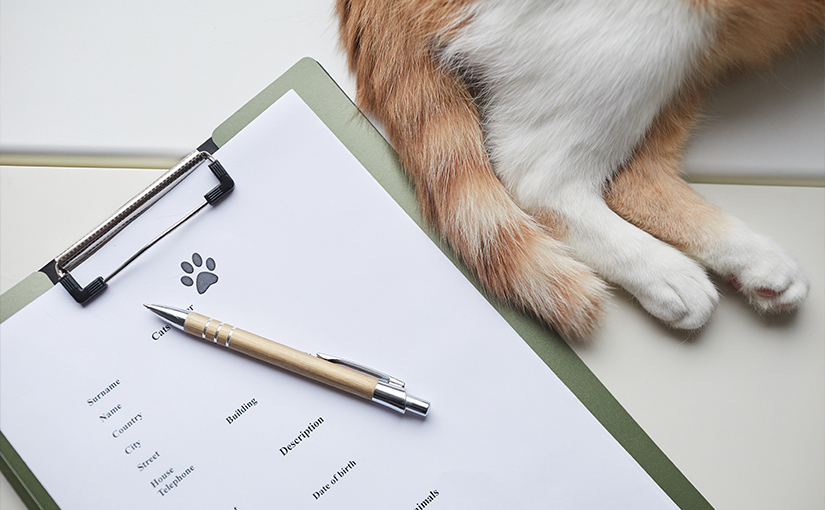Moving Overseas with Pets: A Complete Checklist
Moving overseas with pets is, therefore, one of the most exhilarating but overwhelming things you may ever face. Your pet is akin to your family members, so looking out for the safety and comfort of your beloved fur babies in such a big move is necessary. Proper planning will help you take things forward, making this move as less stressful as possible for you and your furry friends. Here, you will get a comprehensive checklist for moving overseas with pets to ensure nothing gets left behind.
1. Research the Country’s Pet Import Regulations
Researching the country’s regulation regarding the importation of pets is the first step in moving overseas with a pet. Vaccination, microchipping, quarantine, and other regulations concerning breeds differ in every country. Other countries have provisions to which you must adhere months before moving, so plan early.
- Vaccination Requirements: Keep your pets current on all vaccinations that are required. Some countries will require specific vaccinations such as rabies and may even require a blood test to confirm immunity.
- Microchipping: Many countries now require pets to have a microchip that meets ISO standards. Permanent form of identification, this is mandatory in most countries for entrance.
- Quarantine: Some countries have quarantine periods for pets upon entering their territories from abroad. Check if your destination has quarantine requirements and plan accordingly.
- Breed Restrictions: Some countries have breed-specific legislations wherein they restrict the entry of some breeds of dogs. Do ensure that the breed of your pet is permitted before making plans.
2. Visit the Veterinarian
An overseas trip with pets requires a visit to the vet in advance. Your vet will do a complete health check-up so that your pets are fit for traveling and vaccinate or treat them against any potential disease. The vet may issue a health certificate, often required during international move by your pets.
- Health Certificate: Obtain from your vet a health certificate stating that your pets are healthy enough and fit for travel. This document is almost universally required by the airlines and customs.
- Medications: If your pets take medications of any kind, ensure that you have a large enough supply to last you during the move and well into your destination location. Consider discussing with your vet any potential adjustments that might need to be made during transition.
- Travel Tips: Consult with your vet about how to cope with anxiety or motion sickness your pets may feel when traveling. They will be able to recommend several products or techniques so that your pets remain calm.
3. Choosing the Right Way to Travel
Choosing the right method to travel is another important part when it comes to moving abroad with pets. The most common options are going to be air travel, ground transport, or sea travel—depending on the destination.
Air Travel
- Airline Policies: Some airlines allow flying pets in the cabin, while others allow them in the cargo hold. Research those airlines that are known to be pet-friendly and have clean records in handling pets. Some airlines allow small pets in the cabin while larger ones must travel in the cargo hold.
- Reservation: Inform the airline that you are traveling with your pets at the time of flight reservation. Make a reservation for your pets as early as possible as there are usually limits on the number of pets permitted per flight.
- Crate: Acquire a sturdy, well-ventilated travel crate that is approved by the airlines. Your pets should be able to stand up, turn around, and lie down comfortably in it.
- Pet Relocation Services: If you do not want to go through all the hassle of managing the movement yourself, then you can use a professional pet relocation service. Such companies are experienced in securely moving your pets across borders by air.
Ground Travel
- Driving: You can drive if you are relocating to a nearby country or enjoy road trips. With this method, you will have greater control over the journey, and you can stop as frequently as your pets may need.
Sea Travel
- Cruise Lines: A few cruise lines do accept pets on board, although this is rather rare and might be conditional. If you’re planning sea voyages, then check with the cruise line for their policy on pets.
4. Prepare Your Pets for Travel
After choosing the mode of travel, prepare your pets for the trip. Proper preparation will help to minimize stress and make the experience much smoother.
- Get Them Accustomed to the Crate: In case your pets will travel by crate, familiarize them with it much ahead of the relocation. Keep the crate at your place with the same bedding and some toys. This will encourage your pets to spend some time inside the crate.
- Exercise: Give your pets as much exercise as possible before the trip to reduce their anxiety and restlessness during the journey.
- Feeding Schedule: On the traveling day, ensure to feed your pets light meals hours before embarking on the journey to avoid digestion problems. Make them drink water but never overfeed to limit restroom stops.
5. Organize Travel Documents
Moving abroad with pets requires proper preparation of travel documents. Proper travel documents can help you avoid many delays and problematic situations.
- Pet Passport: This usually applies to many countries, especially within the European Union. It contains vaccination records, microchip details, and other health certificates.
- Import Permits: Some countries require an import permit for your pet. Contact the embassy or consulate of the destination country to find out if this is a requirement.
- Travel Itinerary: Take a copy of your travel itinerary indicating details of flights, accommodation and contact numbers of veterinary services at the old and new locations.
6. Arrival Planning
The transition does not stop when you finally arrive at your destination. Arrival planning will ensure your pets adjust to the new environment.
- Customs Clearance: Be prepared to take your pets through customs upon arrival. Ensure that all documents are in place and ready for inspection, including health certificates, vaccination records, import permits, etc.
- Temporary Accommodation: If you are not moving straight into permanent housing, ensure that temporary accommodation is available and pet-friendly. Research in advance about pet-friendly hotels or short-term rentals.
- Settling In: Upon arrival, assist your pets in settling in by providing them with familiar surroundings. They should have their beds, favorite toys, and food and water bowls set up in some quiet area where they are likely to feel safe.
7. Find a Local Veterinarian
Once relocated overseas with pets, finding a local veterinarian should be one of the most important tasks. Many vital services can be offered by a vet: updating inoculations or simply advice concerning the care of your pet in its new environment.
- Research: Get referrals as to local trusted veterinarians from locals or other expats. You can also put the phrase “vet clinics near me” or “best vet clinic” into a search engine, and read the reviews.
- Initial Check-Up: Have an initial check-up with the new vet to establish a relationship and transfer your pets’ medical records. It is also a very good opportunity to ask about any local health concerns for pets.
8. Update Pet Identification
Following your move overseas with your pets, update their identification to reflect your new contact details.
- Microchip Information: Update your pets’ microchip details with your new address and phone number. This is very important because it helps return your lost pets.
- ID Tags: If your pet is fitted with identification tags, he should get your new information engraved on them.
Conclusion
While moving overseas with pets requires some planning and preparation, it can be quite smooth and rewarding if one approaches it in the right kind of way. This complete checklist will ensure your pets are well taken care of on their way to your new home and settling as smoothly and stress-free as possible. Remember, the key to a successful move is starting early, staying organized, and giving utmost care to your pets along the process.










